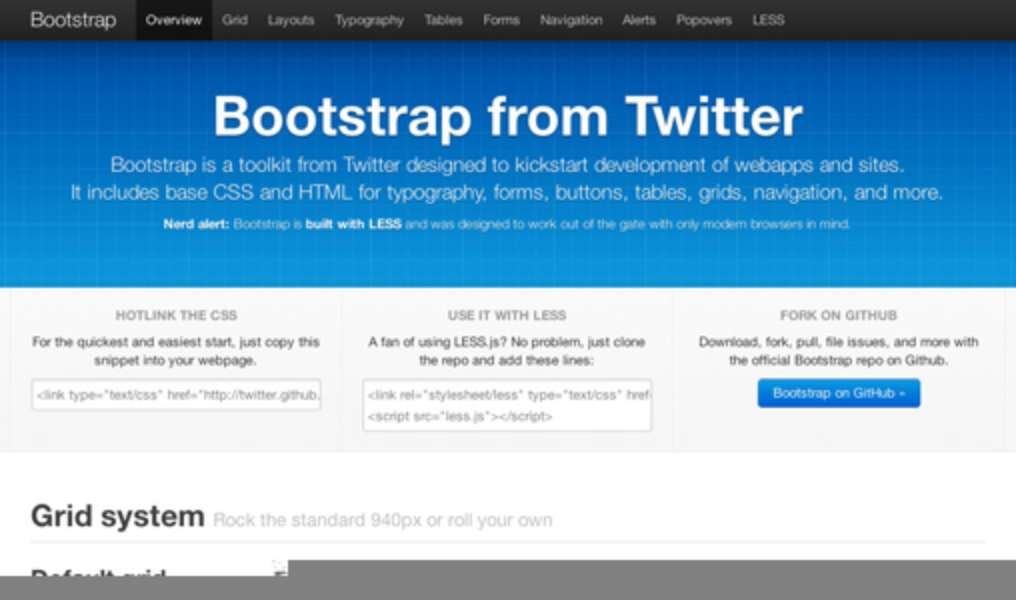We are happy to announce Bootstrap, a front-end toolkit for rapidly developing web applications. It is a collection of CSS and HTML conventions. It uses some of the latest browser techniques to provide you with stylish typography, forms, buttons, tables, grids, navigation and everything else you need in a super tiny (only 6k with gzip) resource. Check out Bootstrap on Github.

In the earlier days of Twitter, engineers used almost any library they were familiar with to meet front-end requirements. Inconsistencies among the individual applications made it difficult to scale and maintain them. Bootstrap began as an answer to these challenges and quickly accelerated during Twitter’s first Hackweek. By the end of Hackweek, we had reached a stable version that engineers could use across the company.
With the help and feedback of many engineers, Bootstrap has grown significantly to encompass not only basic styles, but more elegant and durable front-end design patterns. This release represents our first public 1.0 release and the open sourcing of many months of hard work.
At its core, Bootstrap is just CSS, but it’s built with Less, a flexible pre-processor that offers much more power and flexibility than regular CSS. With Less, we gain a range of features like nested declarations, variables, mixins, operations, and color functions. Additionally, since Bootstrap is purely CSS when compiled via Less, we gain two important benefits:
First, Bootstrap remains very easy to implement; just drop it in your code and go. Compiling Less can be accomplished via Javascript, an unofficial Mac application, or via Node.js (read more about this at http://lesscss.org).
Second, once complied, Bootstrap contains nothing but CSS, meaning there are no superfluous images, Flash, or Javascript. All that remains is simple and powerful CSS for your web development needs.
When you take a closer look at Bootstrap, you will notice we have separated the development files into seven distinct files:
Since we opted to break our CSS into more manageable chunks for easy organization and iterations, compiling these files with Less means you end up with just one CSS file to include.
Bootstrap works by providing a clean and uniform solution to the most common, everyday interface tasks developers come across. At Twitter, Bootstrap has quickly become one of our many go-to front-end tools when starting new applications and sites. This is because while it is very extensive, it’s flexible enough to work for many unique design needs.
Today, you can use Bootstrap to throw together quick prototypes or guide the execution of more sophisticated designs and larger engineering efforts. In other words, Bootstrap is a very simple way to promote quick, clean and highly usable applications.
We look forward to working with the open source community to evolve Bootstrap.
We want to keep working on slimming down Bootstrap’s already tiny footprint while also increasing the breadth of what it covers. As always, we’d love your feedback and hope you find it useful. If you’d like to help make Bootstrap better, feel free to fork it, file issues and watch its progress over on GitHub.
Did someone say … cookies?
X and its partners use cookies to provide you with a better, safer and
faster service and to support our business. Some cookies are necessary to use
our services, improve our services, and make sure they work properly.
Show more about your choices.